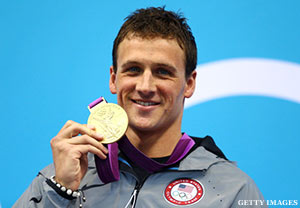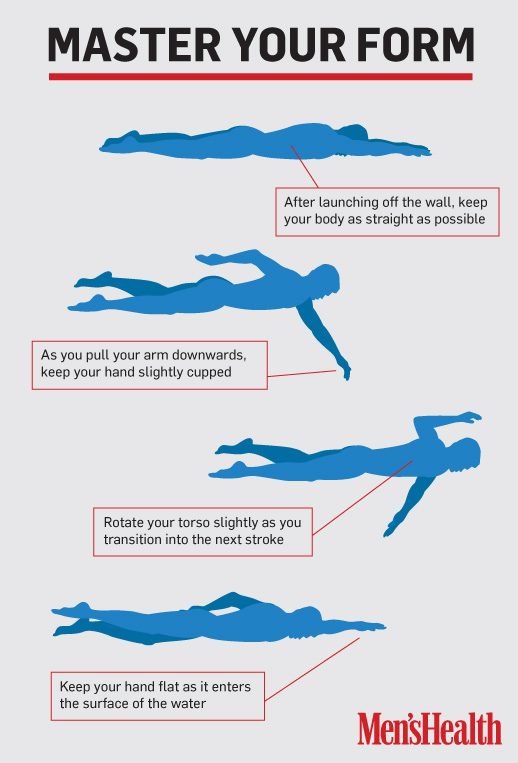
Now that gold medal swimmer Ryan Lochte has already lived up to his pre-Games hype, you might wonder: How could you swim that fast? Or even half that fast?
Put the time in, says Lochte. "Push when you don't want to -- that's what separates the average from the great."
If you want to increase your speed in the pool, make sure your time is well spent and follow these tips that helped Lochte pave his path to the London Games. (And to sculpt an athletic-looking body, check out The Spartacus Workout for Men and The Spartacus Workout for Women -- the most popular fat-blasting workouts in Men's Health and Women's Health history. )
Master Your Form: Keep your body as straight as possible. "When I push off the wall, I try to stay in a tight line," says Lochte. "My body basically looks like a pencil going through the pool." When your hands enter the water, they should be flat, striking down into the surface, and aiming toward the other side of the pool. When you pull your palms back -- transitioning into that next stroke -- your palms should be facing down toward the bottom of the pool, slightly cupped. That's how you'll pull all that water and propel yourself forward, says Lochte.

Dominate the Flip Turn: If you want to master this move, it all comes down to timing. When approaching the other side of the pool, do a somersault towards the wall when you're about a stroke away. Instead of focusing on the position of your feet, concentrate on curling your body in a tight ball. The tighter you are, the faster your hips will turn over -- and the rest of the body just follows, he says. (Another way to keep your body tight: Try this 15-Second Weight Loss Tip).
Train for Speed: The secret to faster times? Swim harder. To increase your speed, the distance you put in doesn't matter as much as the amount of power you put into each stroke. "There are always certain days in the pool where you just feel tired, and your body starts to fatigue," says Lochte. "But that's when you push your body harder." Lochte's suggestion: Start out sprinting shorter distances like 25 meters and 50 meters -- as hard as you can -- and power through the fatigue. As your times begin to drop and your body feels stronger, work your way up to something longer like 200 meters.
Build Your Core: No matter your skill level -- Olympic or beginner -- a strong core is the foundation for a strong stroke, says Lochte. When you’re kicking in the water, power originates from there, moving down through your hips, hamstrings, and feet. Your move: Work your abs till they burn. “For me, regular sit-ups do the trick, but you’ve got to work them hard enough to feel it,” says Lochte. Want a midsection like Lochte? Then read this guide on How To Get Six-Pack Abs.
Keep It Fun: A rookie mistake: Hitting the pool alone. "If I had to swim by myself, I wouldn't be where I am at right now," says Lochte. If you're trying to get in to the sport, bring along a friend. Training alongside someone keeps it entertaining, it's motivating, and it keeps things competitive.
More From Men's Health:
-- Swim Your Way To A 6-Pack
-- Swim Gear Basics
-- The Ultimate Starter Swim Workout





